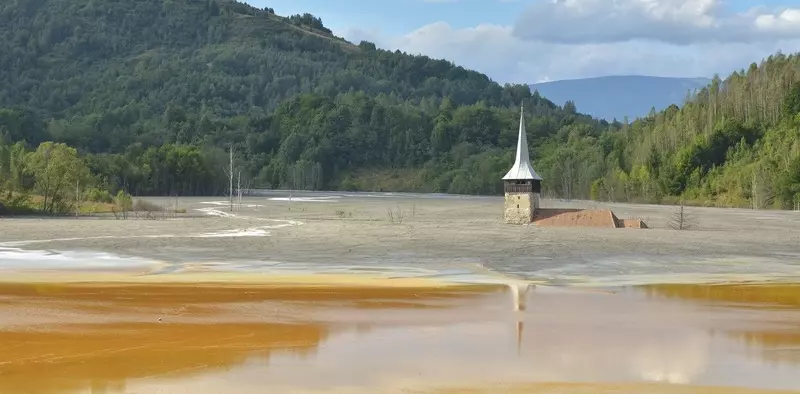[Originally published as part of The Noachian Deluge: Does Scripture Say Global, or Local?]
Scientific Inconsistencies on the Local View
Having considered the Scriptural problems, we must now observe the scientific issues which arise if Genesis is merely describing a local deluge.
First, we see the necessary assumption of human geographic isolation.
In order to have a local flood theory that affirms the complete annihilation of all humans save eight aboard the ark, one must assume that the entire antediluvian population was contained to one geographic area. But I’m unaware of actual evidence in support of this claim, and cannot find a clear statement on this from the folks at Reasons to Believe, who most prominently promote this view.
An inescapable feature of this assumption, however, is a denial of Neanderthal humanity. This is quite problematic from a scientific perspective, due to the increasing evidence that Neanderthals and many of their fossil “relatives” were simply human beings much like you and I, albeit with marked differences.
Current evolutionary thought on this subject is that our first human ancestors diverged around seven million years ago. Obviously, there is no workable model in a local flood theory that can incorporate a total destruction of humanity if evolutionary conclusions are correct. It’s for this reason that most Christian evolutionists interpret the flood passages as a sort of allegory; they teach a spiritual truth, but say nothing of actual earth history.
Those who wish to hold both to long-age assumptions and a flood theory that incorporates the death of all human life must find a solution to this insurmountable difficulty, but I’ve yet to find one even remotely convincing.
Furthermore, this serves to underscore the problem mentioned above: it is inconsistent to say that all human life was destroyed while only some animal life was destroyed by interpreting
- the same word,
- used in the same way,
- in the same context,
- found in the same verse
to have two completely different meanings.
Second, consider the location of the Garden of Eden.
I first wrote this as part of another article:
The biblical account found in Genesis 2 suggests that mankind was placed in a physical geographic location known as the Garden of Eden. The Bible claims that a river exits this garden which flows into four separate rivers—the Pison, Gihon, Hiddekel, and the Euphrates—which, in turn, water four separate geographic locations.
However, there is no place on the earth’s present configuration which matches this description.
This suggests that either the account is incorrect (which would be problematic since Jesus affirmed the truthfulness of events regarding mankind in Genesis 2), or something must have happened which would reconfigure the earth so drastically that it would erase all evidence of such a place.
A global flood as described in Genesis 6–9 would accomplish this nicely, but this solution must be false on old age chronology due to geological considerations, rendering a massive contradiction (or inconsistency, if we’re generous) between such chronology and the teachings of Jesus. One could certainly posit an extent for a “local” flood that would accomplish this reconfiguration; but such a supposition would have to be arbitrary since the Bible gives no clear understanding of the geographical extent of this deluge, if not global.
Third, it seems to me that the animals on the ark could have simply escaped or moved locations.
With no clear guidelines as to the flood’s extent if it were local, it seems that all any organism would have to do to escape would be to change locations. It’s clear from the text that God had a part in commanding the animals to go to Noah and board the ark. Why did God not simply have these animals change locations?
A common strawman of the young age position is that, were the flood global, we’d have to expect penguins, polar bears, etc. on the ark. Of course, young age creationists do not teach this! Based on the text, we’d conclude that the continents were all together in one landmass (see Genesis 1:9-10) prior to the flood and that the created kinds bore little resemblance to the diverse groups of species we see today.
Therefore, the young age position is consistent. On the old age local interpretation, however, a version of this problem arises. For if the flood were only local, and we take the text seriously when it says that all land animals (and some others) had representatives on the ark, we’re forced to consider the strenuous reality that these animals must have migrated across tremendous distances to reserve their place.
Two further difficulties arise:
- that the ark would not have had the capacity to hold a representative of each animal group at this time on old age chronology, and
- that the fossil record shows around 250,000 species were already extinct at the time of the flood.
It’s clear that, from both a Scriptural and scientific perspective, figuring out what animals could and/or should have been on the ark is a near-insurmountable task on the local flood theory.
Fourth, we find the problem of “all the high hills” being covered by this Flood.
The Genesis 7 narrative states that “all the high hills, that were under the whole heaven, were covered. Fifteen cubits upward did the waters prevail; and the mountains were covered.”
In their commentary of the Old Testament, Keil and Delitzsch illustrate and expound upon this problem with candor and clarity:
To speak of such a flood as partial is absurd, even if it broke out at only one spot, it would spread over the earth from one end to the other, and reach everywhere to the same elevation. However impossible, therefore, scientific men may declare it to be for them to conceive of a universal flood of such a height and duration in accordance with the known laws of nature, this inability on their part does not justify any one in questioning the possibility of such an event being produced by the omnipotence of God.
The above treatment highlights the fact that water seeks its own level, rendering any local flood matching the biblical description an impossible contradiction.
However, more recent creationist work has shed new light which Keil and Delitzsch could not have been aware of. I am speaking of the general agreement among creationist geologists and geophysicists that the global cataclysm actually caused the arising of many of today’s mountains and mountain ranges.
So while Ross et al. have, in the past, straw-manned creationists by claiming that we require Everest and other super-tall mountains to have been covered, nothing could be further from the truth! We actually take these formations to be further confirmation that the global flood theory as stated plainly in Genesis is, in fact, scientifically correct.
In concluding our scientific and Scriptural critique of the local view, we find it is enormously untenable for a variety of important reasons.







